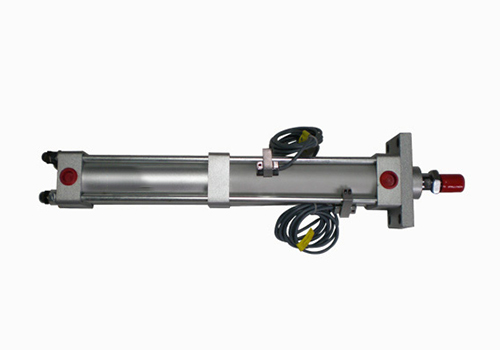What is an impact cylinder? Specific application introduction of impact cylinder
The cylinder is a cylindrical metal part that guides the piston to perform linear reciprocating motion. The working medium converts thermal energy into mechanical energy through expansion in the enginecylinder, and the gas is compressed by the piston in the compressor cylinder to increase the pressure.
The impact cylinder is a new type of component that converts the pressure energy of compressed gas into the kinetic energy of the high-speed movement of the piston to perform work. The impact cylinder adds a center cover with a spout and a drain port. The middle cover and piston divide the cylinder into three chambers: air storage chamber, head chamber and tail chamber. It is widely used in various operations such as blanking, punching, crushing and forming.
The impact cylinder is suitable for installation in a relatively compact space due to its very small length. The requirements for the size and distance of the installation location are relatively low.

How the impact cylinder works
The impact cylinder is composed of a storage cylinder, a middle cover, an exhaust hole, a jet hole, a piston and other parts.
After the impact section, from an energy point of view, the pressure energy in the cylinder cavity is converted into piston kinetic energy, and part of the kinetic energy of the piston is converted into pressure energy in the rod cavity. As a result, the pressure in the gas storage-rodless cavity will be still high, that is, an "air cushion" will be formed, causing the piston to move in the opposite direction. As a result, the pressure in the gas storage-rodless cavity will increase, and it will be greater than the pressure in the rod cavity.
In this way, the piston will move back and forth in the cylinder - that is, bounce. Until the pressure difference on both sides of the piston cannot overcome the piston resistance and no more bounce occurs. After the gas in the rod cavity is emptied, the piston will move down to the end point. After the piston reaches the end point, if the reversing valve is not reset in time, the air storage-rodless cavity will continue to be inflated until the air source pressure is reached.
When resetting, the filled gas needs to be completely discharged. It can be seen that this kind of inflation cannot do useful work and is called the energy consumption section. This section should be avoided in actual use (making the reversing valve return to the reset section in time).
During the entire working process of impact, the large movement acceleration causes the piston to produce a large movement speed. However, due to the need to overcome the increasing back pressure and friction of the rod cavity, Then the piston speed will slow down again. Therefore, at a certain stroke, the movement speed must reach a maximum value, and the impact energy at this time also reaches a maximum value. Various impact operations should be completed at this time.
When the hammer head impact work of the impact cylinder is completed, the stroke switch usually sends a signal to reset the reversing valve, and the cylinder directly switches from the impact section to the reset section, and the cycle Back and forth to get the job done.
Introduction to the characteristics of impact cylinder
1. No lubrication: Using oil-containing bearings, the piston rod does not need to be lubricated.
2. Buffering: In addition to fixed buffering, the cylinder terminal also has adjustable buffering, making the cylinder reversing smooth and impact-free.
3. High temperature resistance: The use of high temperature resistant sealing materials allows the cylinder to operate normally under high temperature conditions of 150 degrees Celsius.
4. Insulation between the welding gun and the machine bodyCylinderThe position of the piston rod is adjustable and can prevent rotation.
5. The head of the piston rod of the impact cylinder has a Morse No. 3 tapered hole, which makes the installation of the welding gun easier.
6. The welding gun has a large pressing force, which is twice the output of a single cylinder to ensure the quality of welding processing.






 WhatsApp: +8615857777578
WhatsApp: +8615857777578